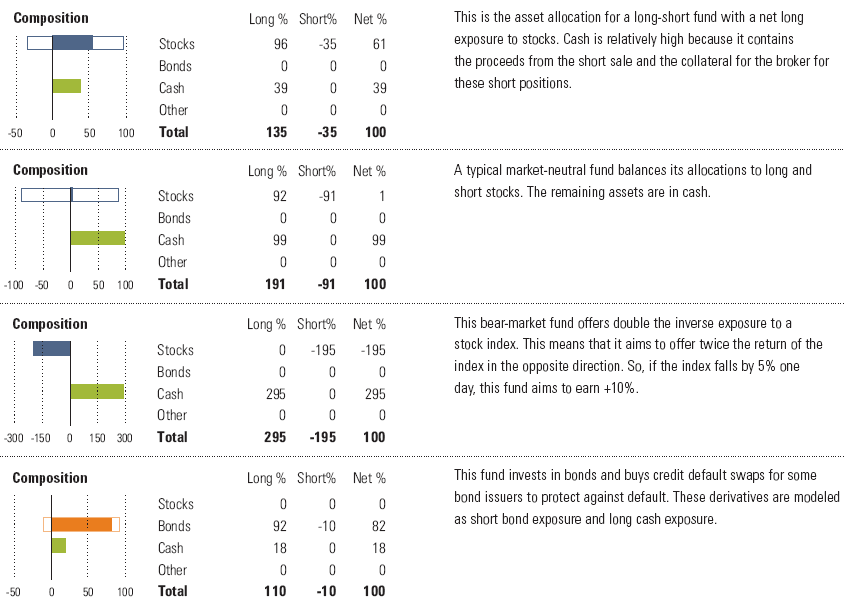

Long Position
Most portfolios take long positions in securities. Long positions involve buying a security outright and then selling it later, with the hope that the security price rises over time.
Short Position
To establish a short stock position, the portfolio manager borrows shares of stock from another party, sells the shares and receives cash. The manager is then obligated to buy the stock and return the shares at some point in the future. Short positions produce negative exposure to the security that is being shorted. This means if the price falls after the short sale, the manager can profit from selling high and buying low. However, if the price of the security rises after the short sale, the manager will experience losses.
Morningstar calculates portfolio statistics on the short positions in each fund and displays long, short, and net statistics as appropriate. If a fund has many short stock positions, the percent of assets in stocks in the asset allocation breakdown may be negative.
Net Value
Encompasses the combined long and short values held by the portfolio. The net asset class percentages may be either positive or negative, but all of the net percentages will always add up to 100% for asset allocation. This is displayed in the four examples below.
Examples:
